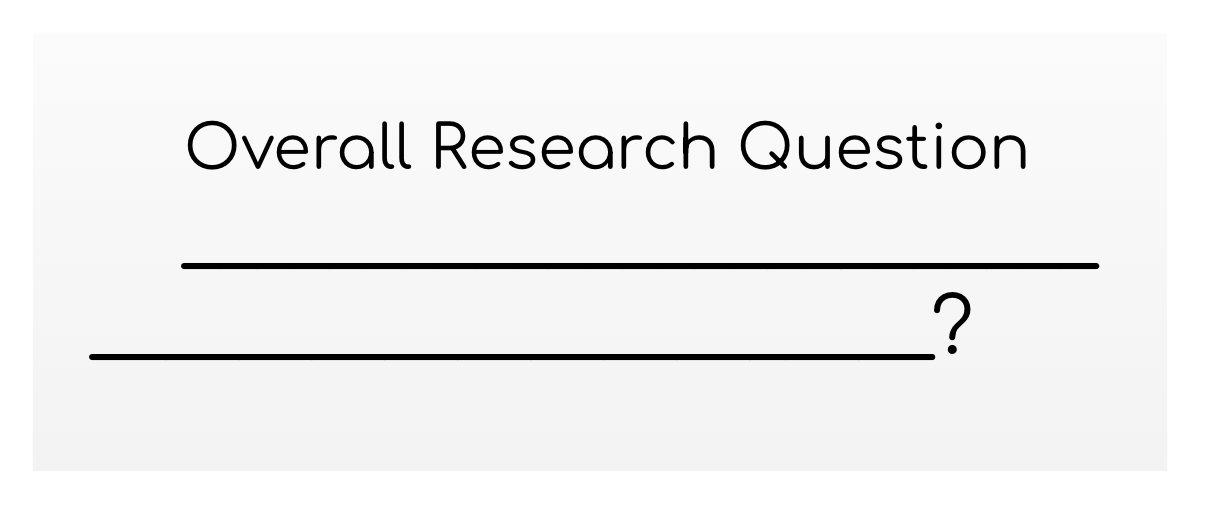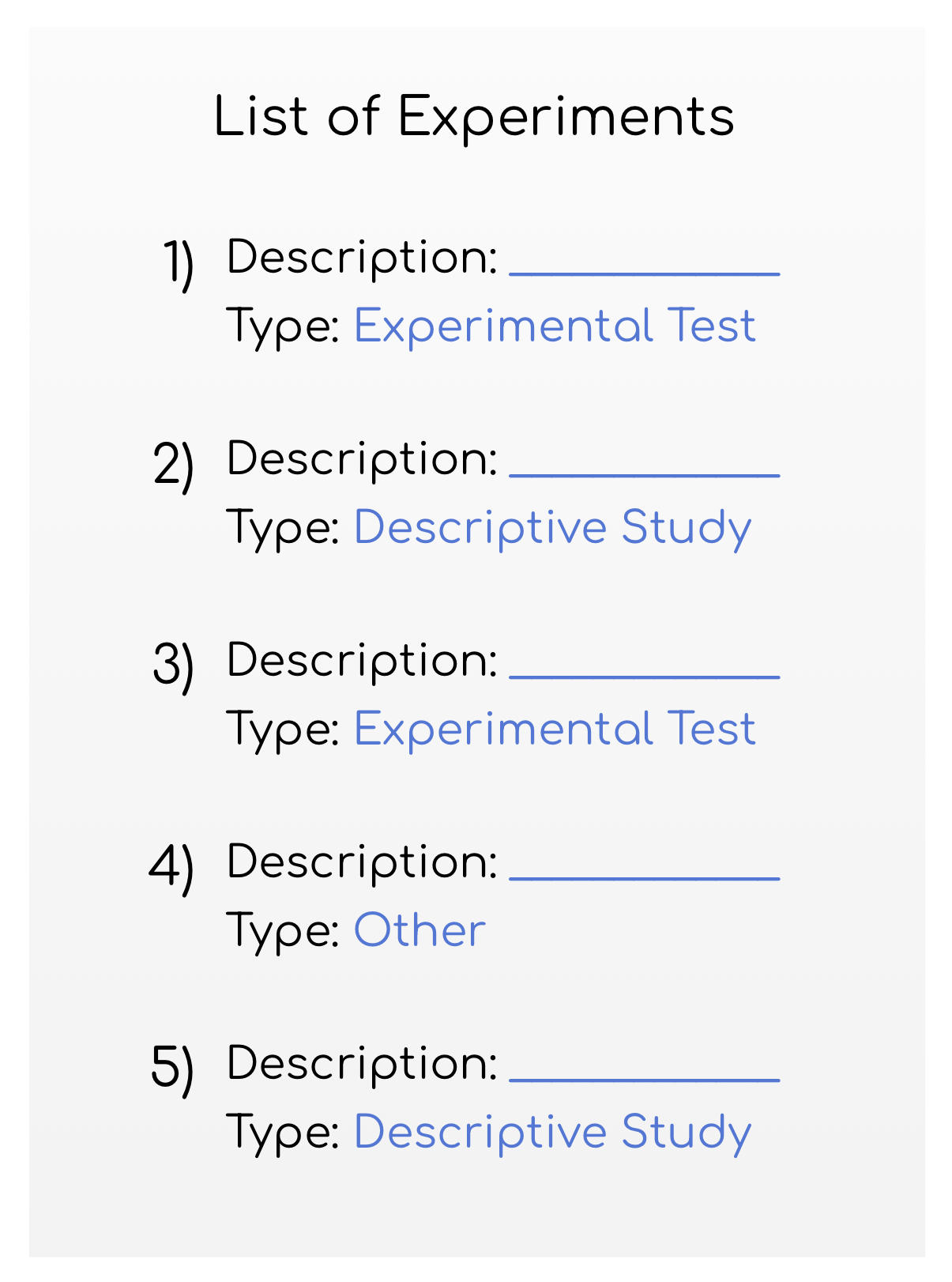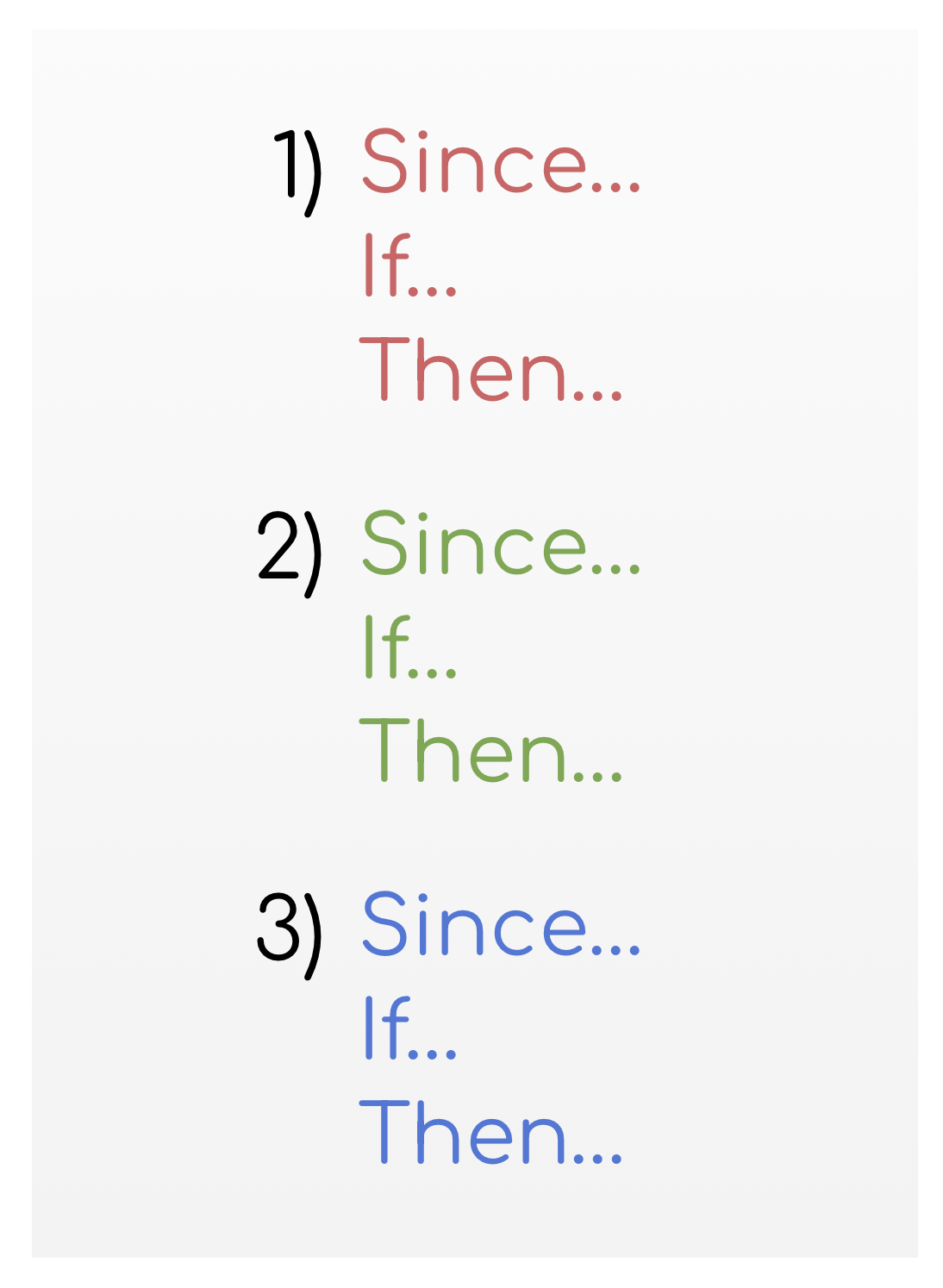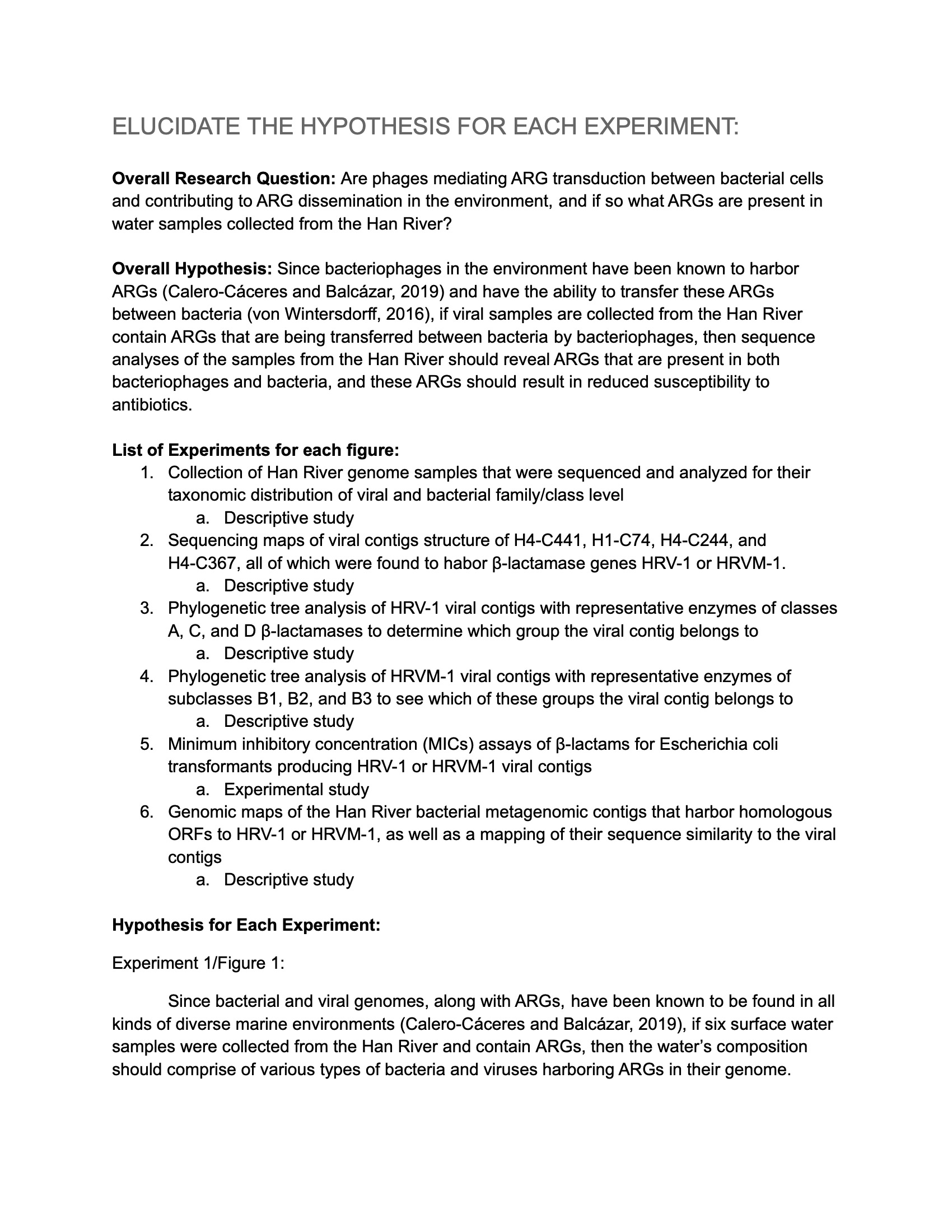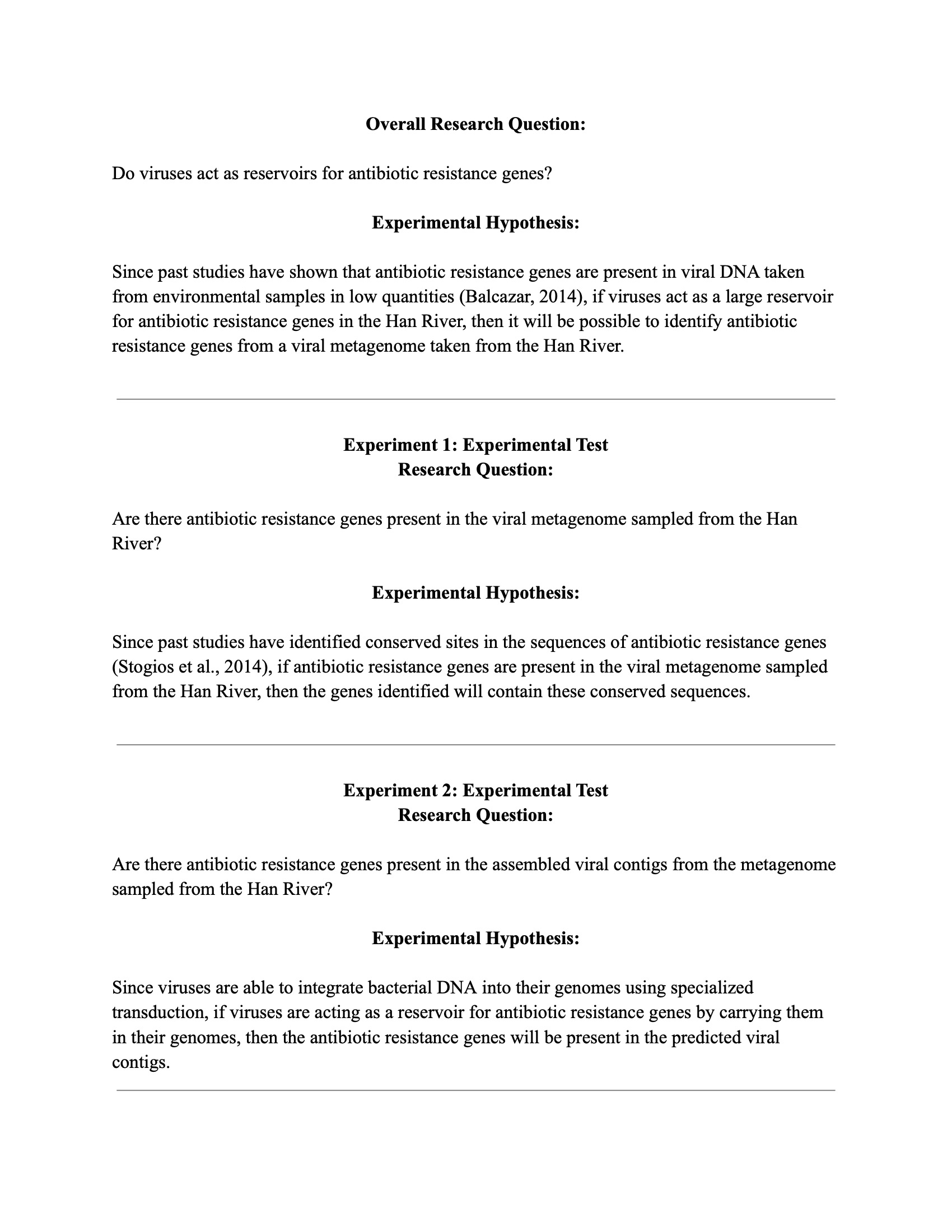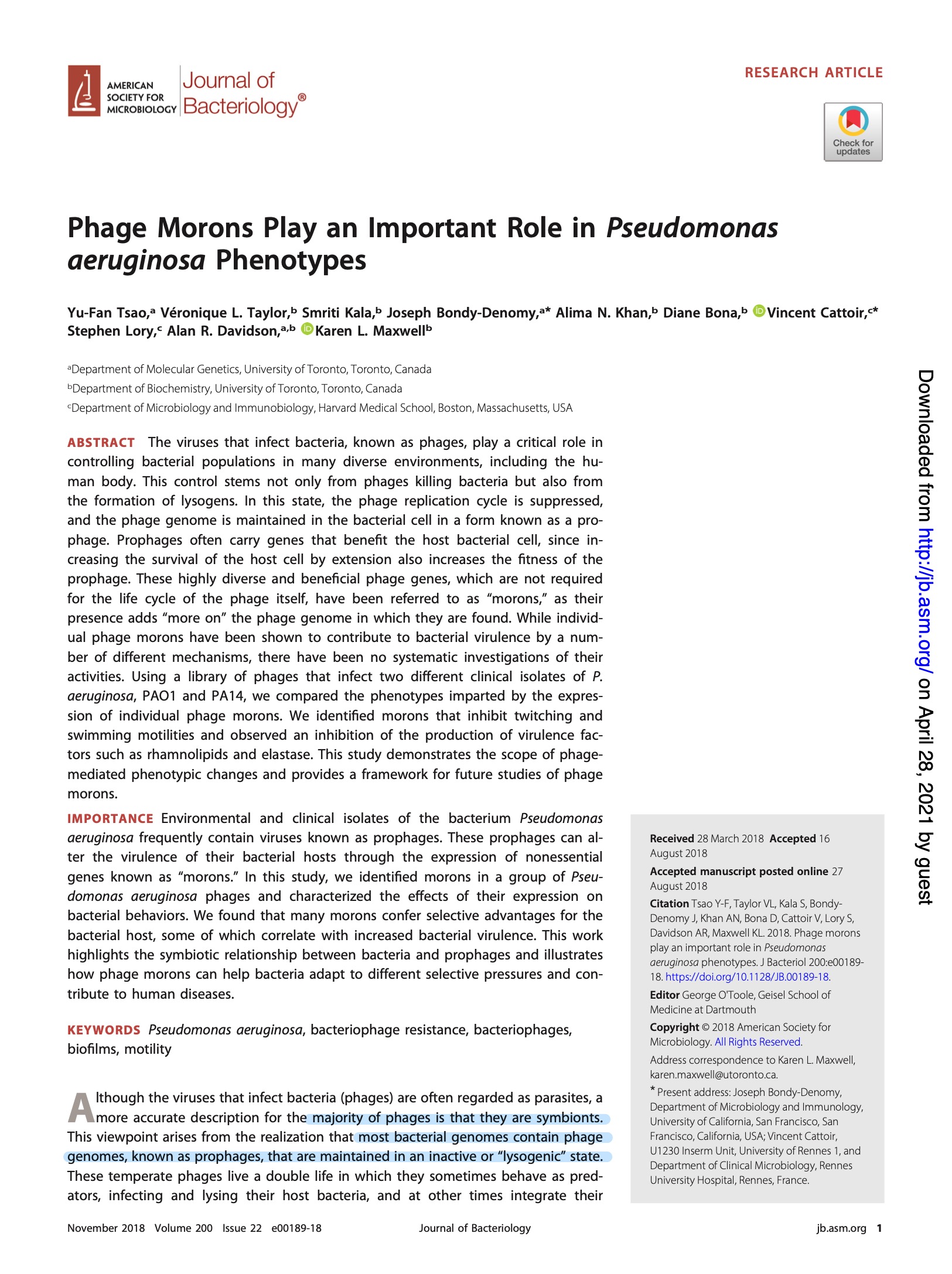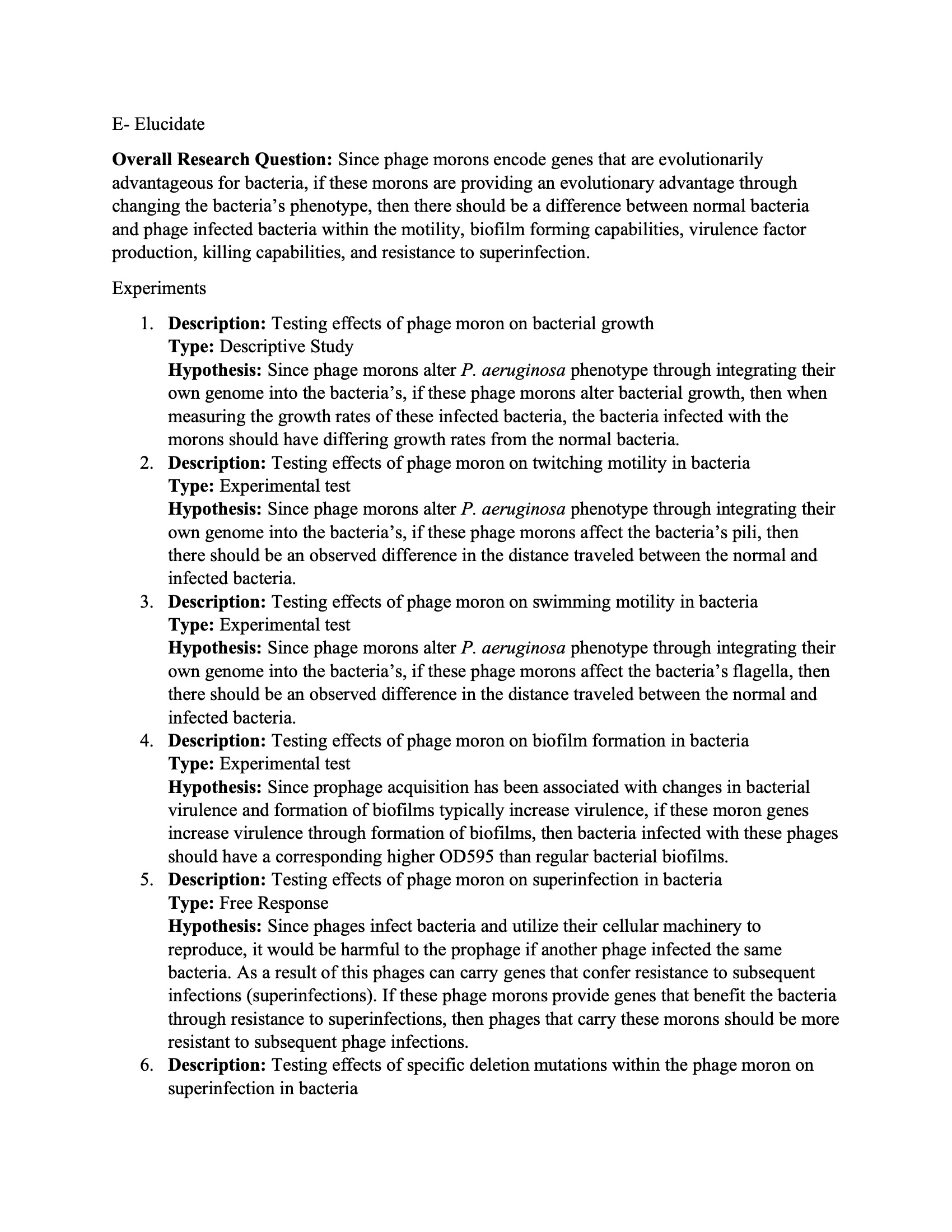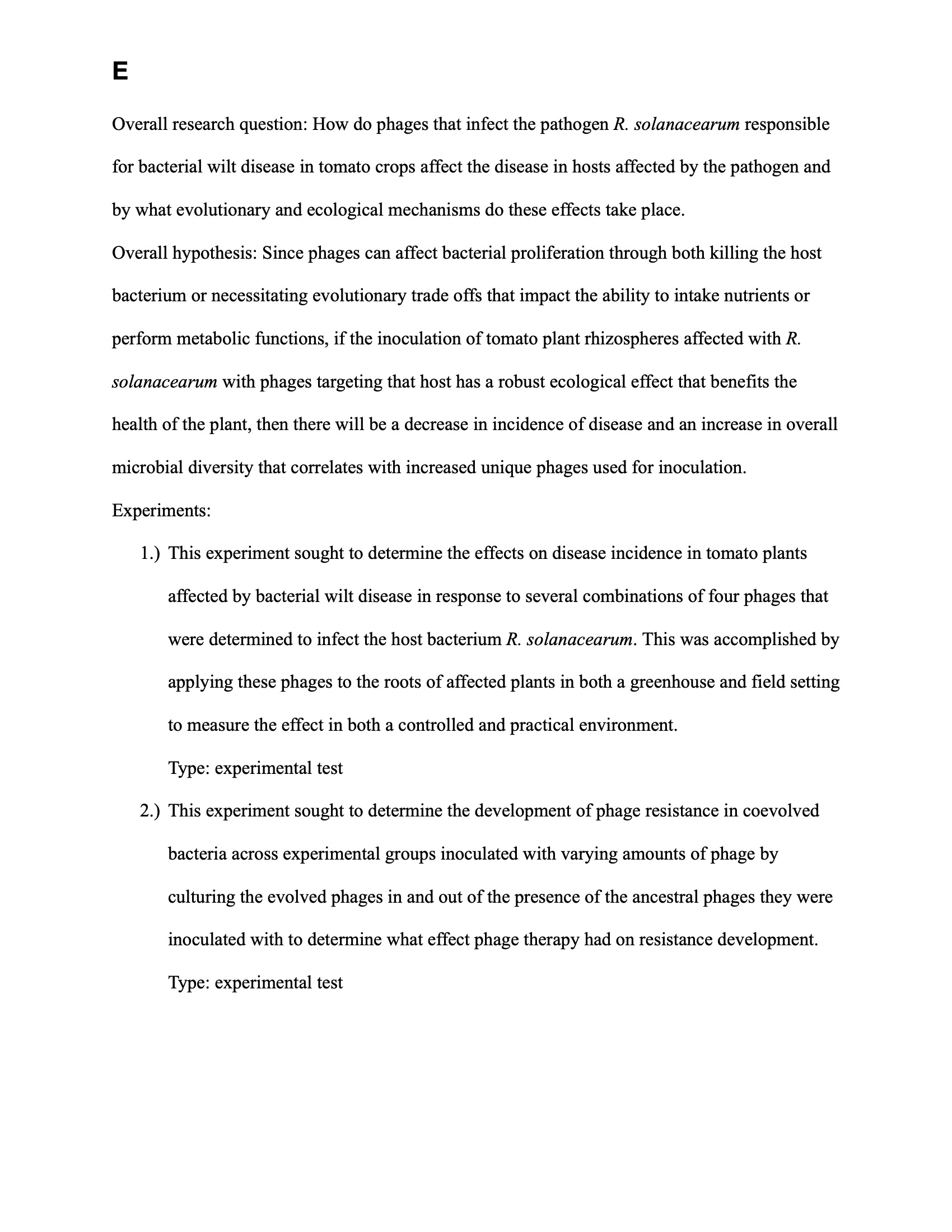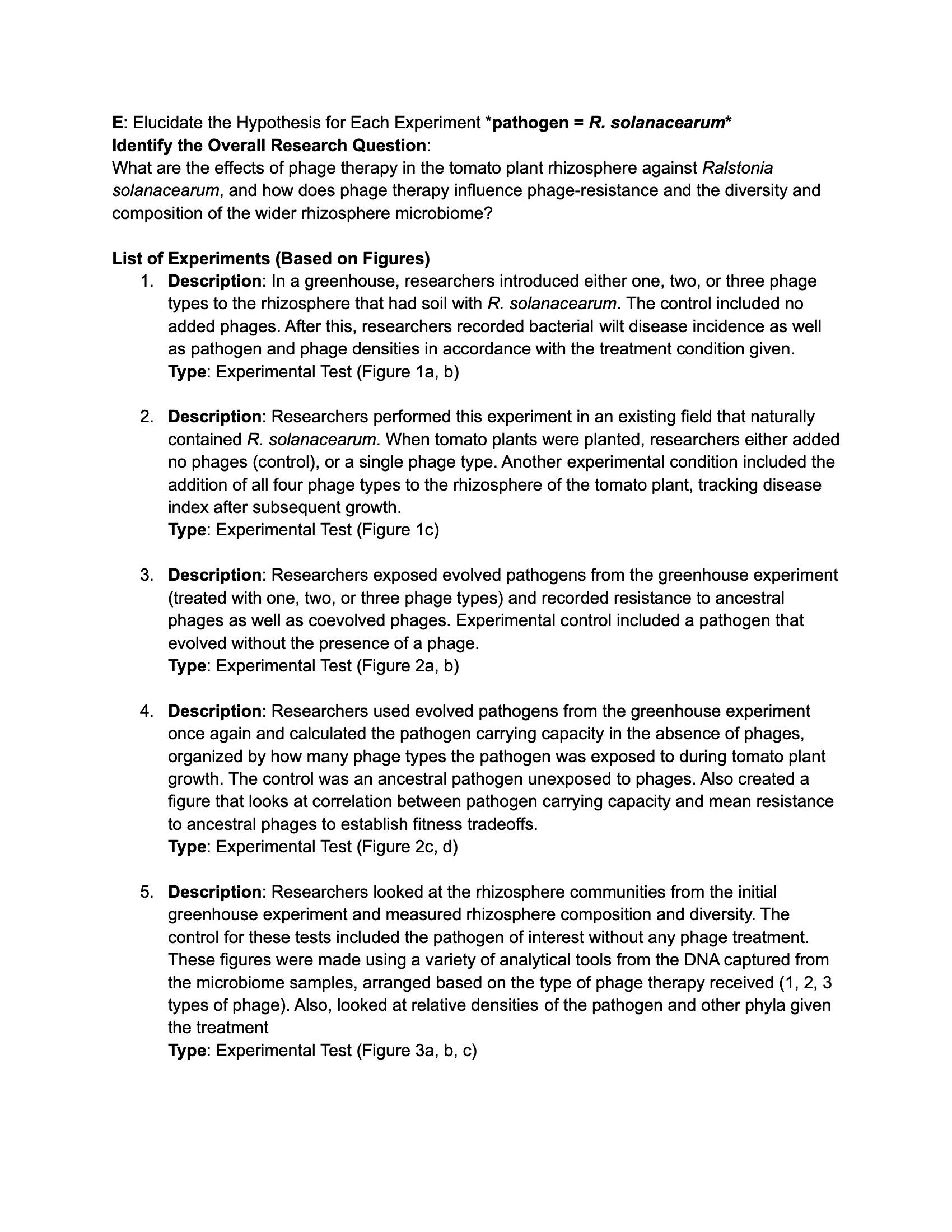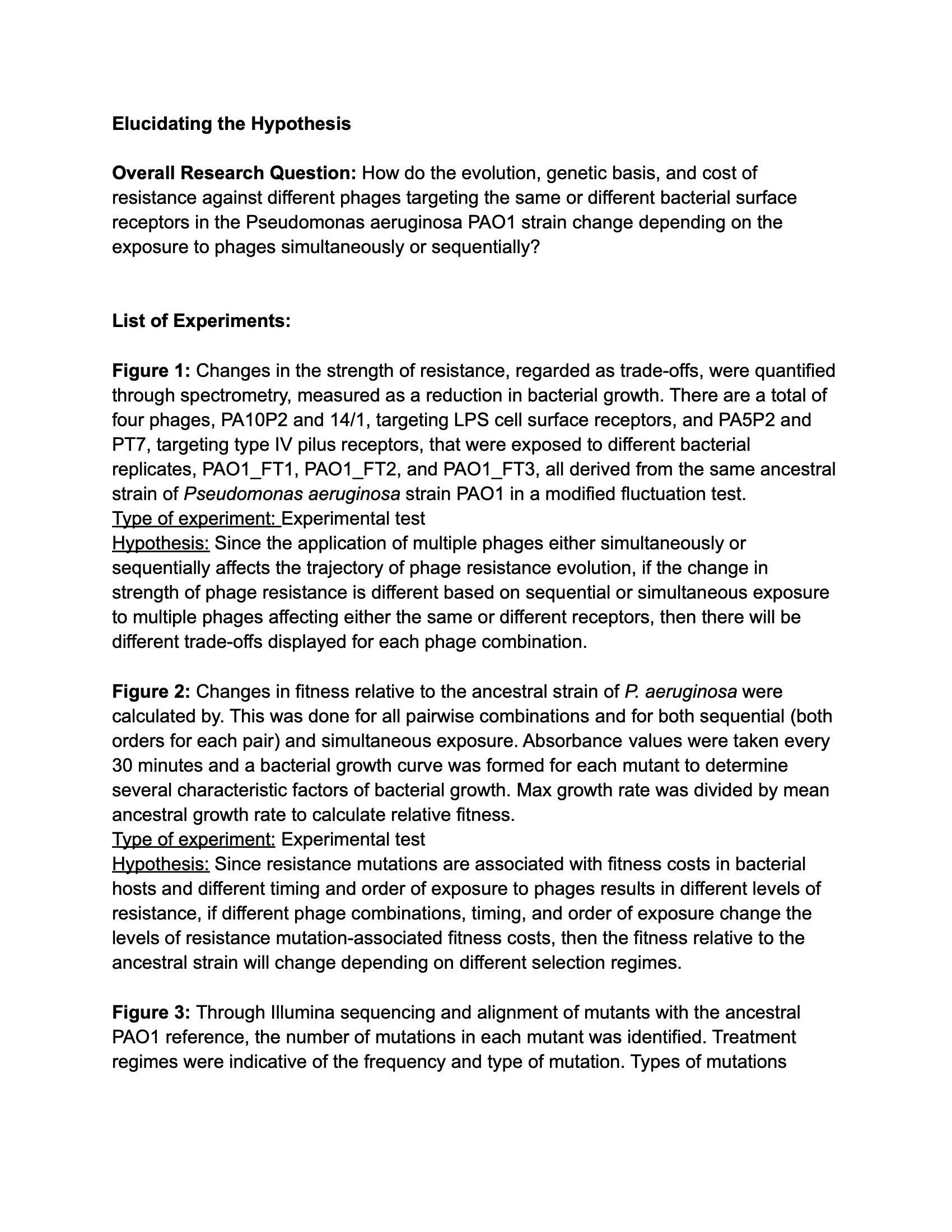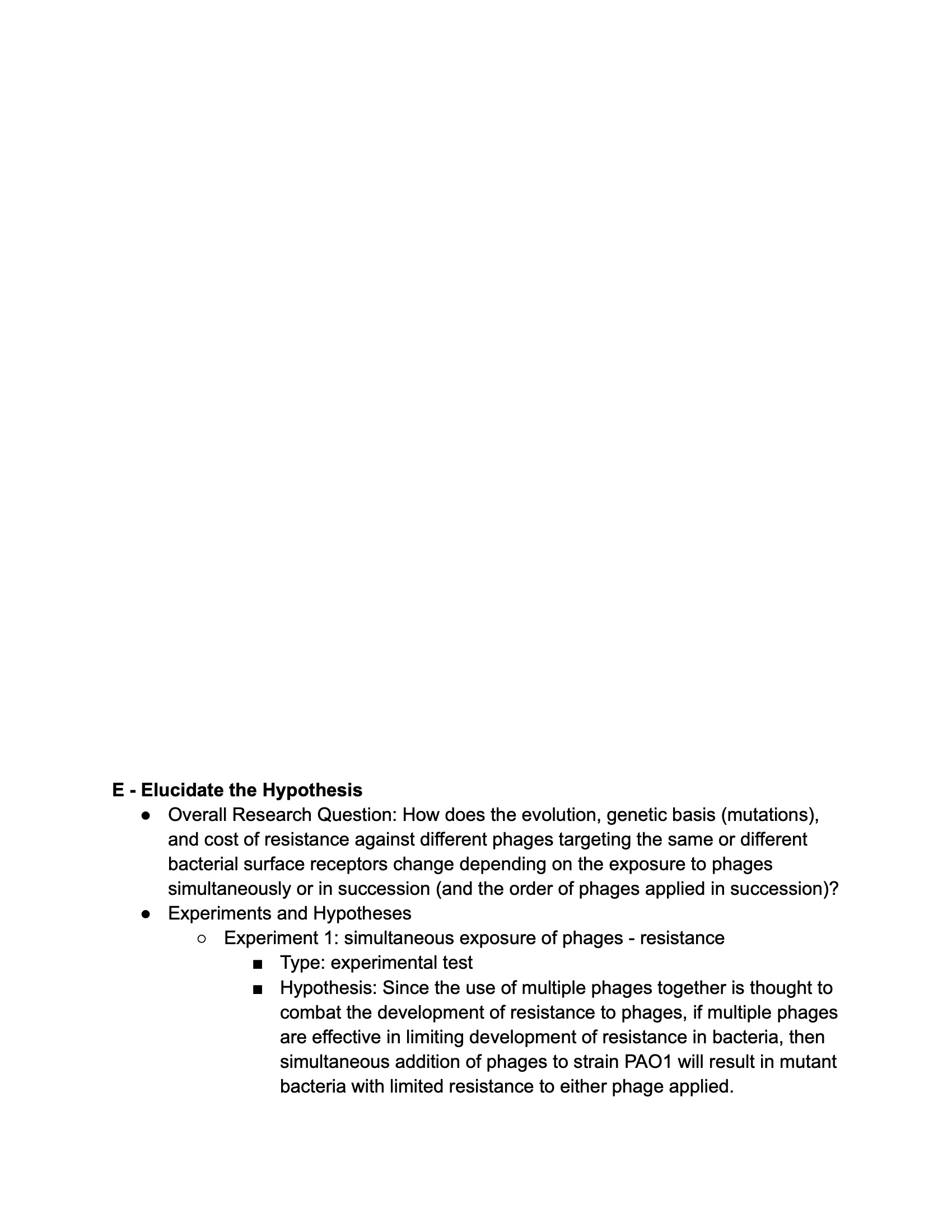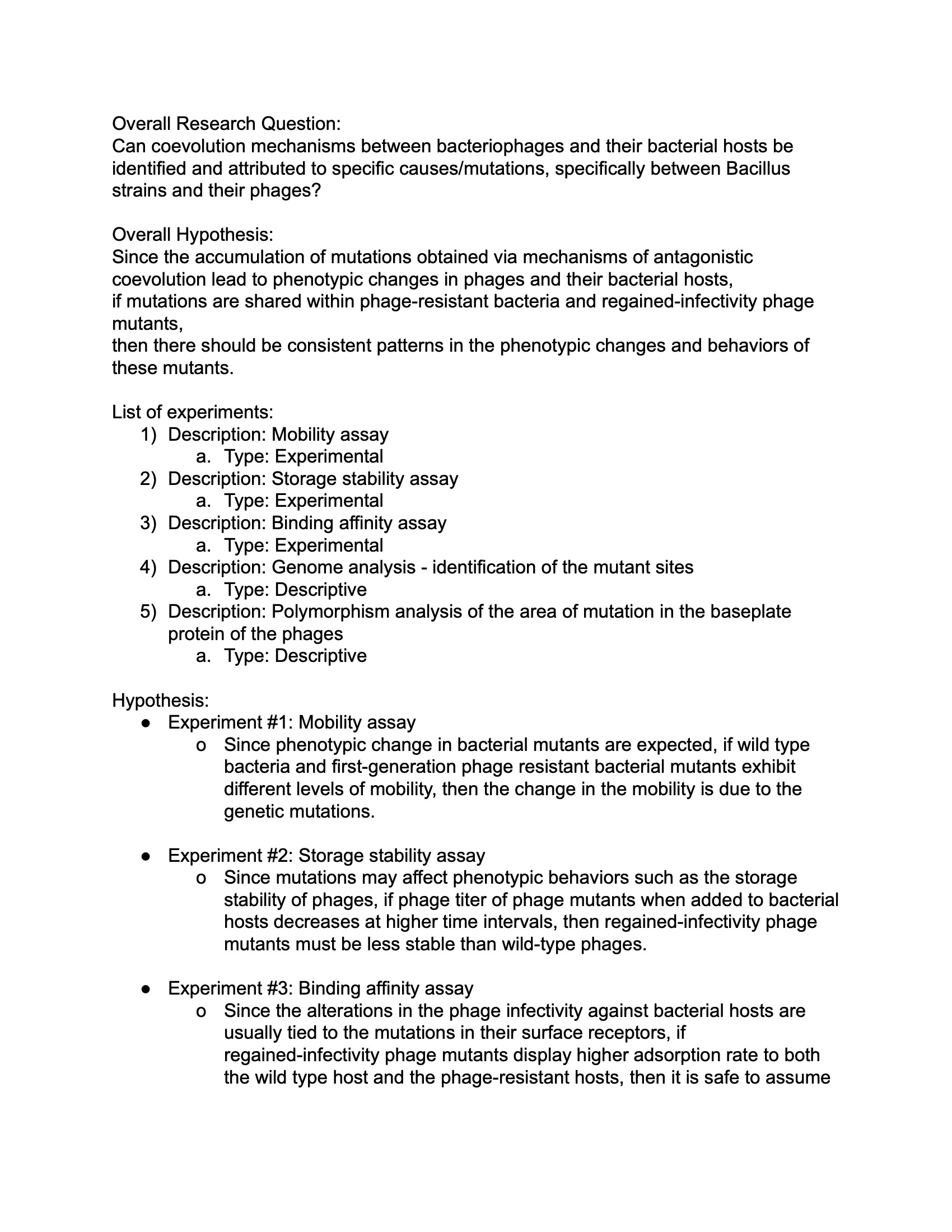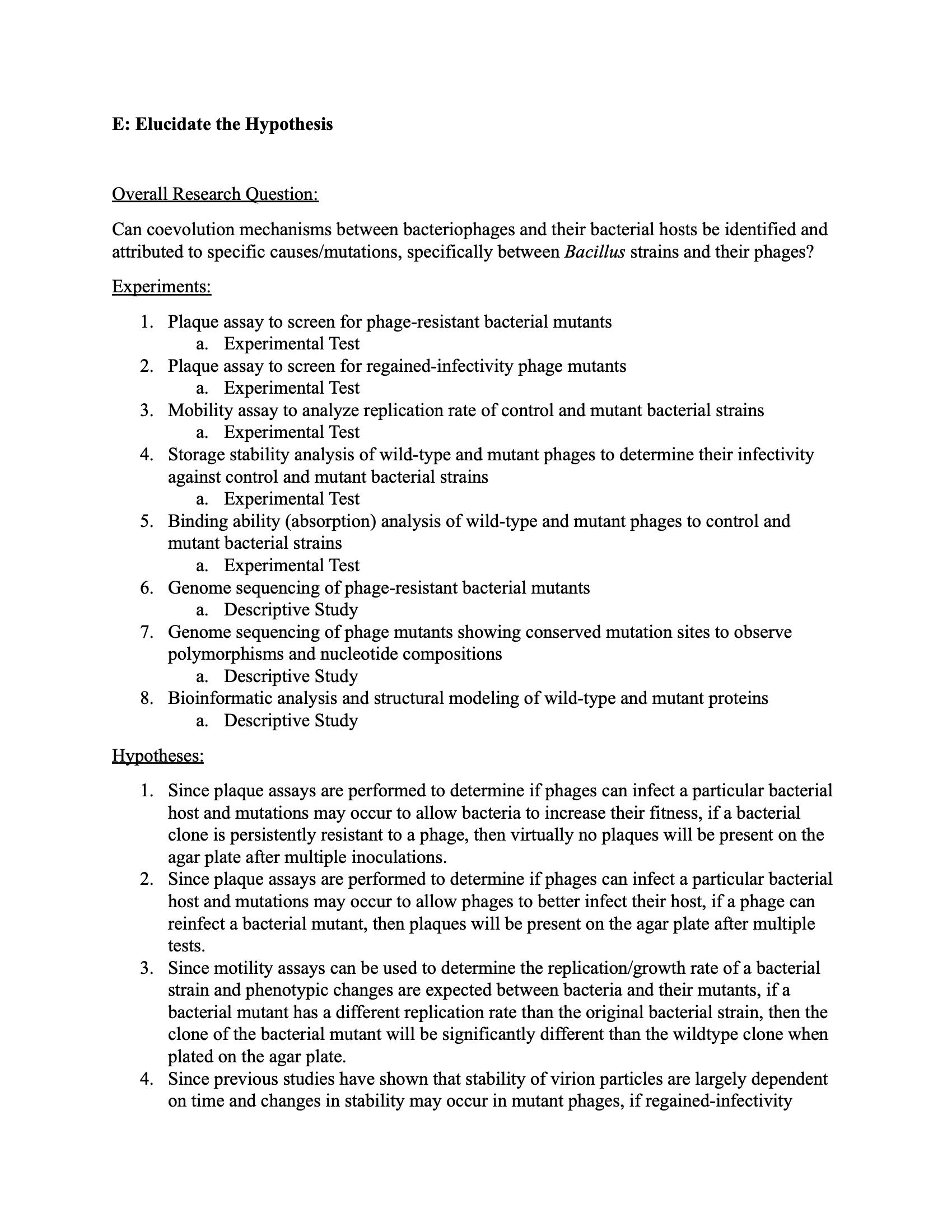E: Elucidate the Hypothesis Elucidate the Hypothesis for Each Experiment
Every experiment in a paper is trying to answer a different part of the overarching research question. Let's figure out what the research question is and how it is being answered.
Identify the Overall Research Question
On a separate sheet of paper or in the margins of the article, write down the overall research question(s) that the paper is trying to answer.
Here are a few tips:
- The research question can often be found in or inferred from the introduction section.
- The concept map you made in C can also provide clues about the research question.
- Make sure the research question includes specific details.
Determine the Type of Study for Each Experiment
- Identify all the experiments in your paper: Looking at the figures, make a list of all the experiments that the researchers conducted. Most of the time, each figure presents one experiment. However, some figures present multiple experiments side-by-side.
- Write down whether each experiment presents a descriptive study, experimental test, or other type of study: A descriptive study looks at existing conditions or data and describes observations about that data. For example, researchers might first want to describe or identify all of the microbes in a healthy mouse gut, and them compare them to the microbes in the gut of a disease model mouse.
An experimental test usually involves identifiable controls and experimental conditions that are specifically manipulated. For example, what happens to the microbial community when mice are given antibiotics (experimental) or no antibiotics (control)?
It’s also possible that your figure doesn’t fit neatly into either of these categories. In this case, label it is “other” and use the Free Response template in the next step. Keep in mind that sometimes there isn’t a comparison involved, and the researchers are describing the results of an observation or exploratory or preliminary experiments.
Identify the Hypothesis for Each Experiment
Each experiment in the paper is an attempt to answer part of the research question.
On a separate sheet of paper or in the margins of the article, write a “Since, If, Then” statement for each experiment. A “Since, If, Then” statement is a way of formulating the hypothesis. It helps you discover…
- why the researchers did the experiment
- what question they were trying to answer
- what they expected the outcome of the experiment to be
Here's how to do it:
- Since: Identify the observation or rationale that led the researchers to conduct this experiment. This can often be inferred from the introduction or beginning of the results section. Turn this into a phrase that begins with the word “since”, e.g. Since previous studies show that fungi have high cellulolytic activity….
- If: Identify the specific question or hypothesis that the researchers are trying to answer through this experiment. You can also think of this as the observation that the researchers are trying to explain. Turn it into a phrase that begins with “if”, e.g. if there is cellulolytic activity in leaf litter….
- Then: Predict the expected outcome of the experiment, and turn it into a phrase that begins with the word “then”, e.g. then most of cellulolytic potential (genes coding for cellulases) will be from fungi.
Some descriptive studies might not have clearly testable “If” statements because they may be exploratory. In those cases the "If, Then" part of the hypothesis may be more like the following:
- Since…
- If x and y are compared…
- Then we will observe…
